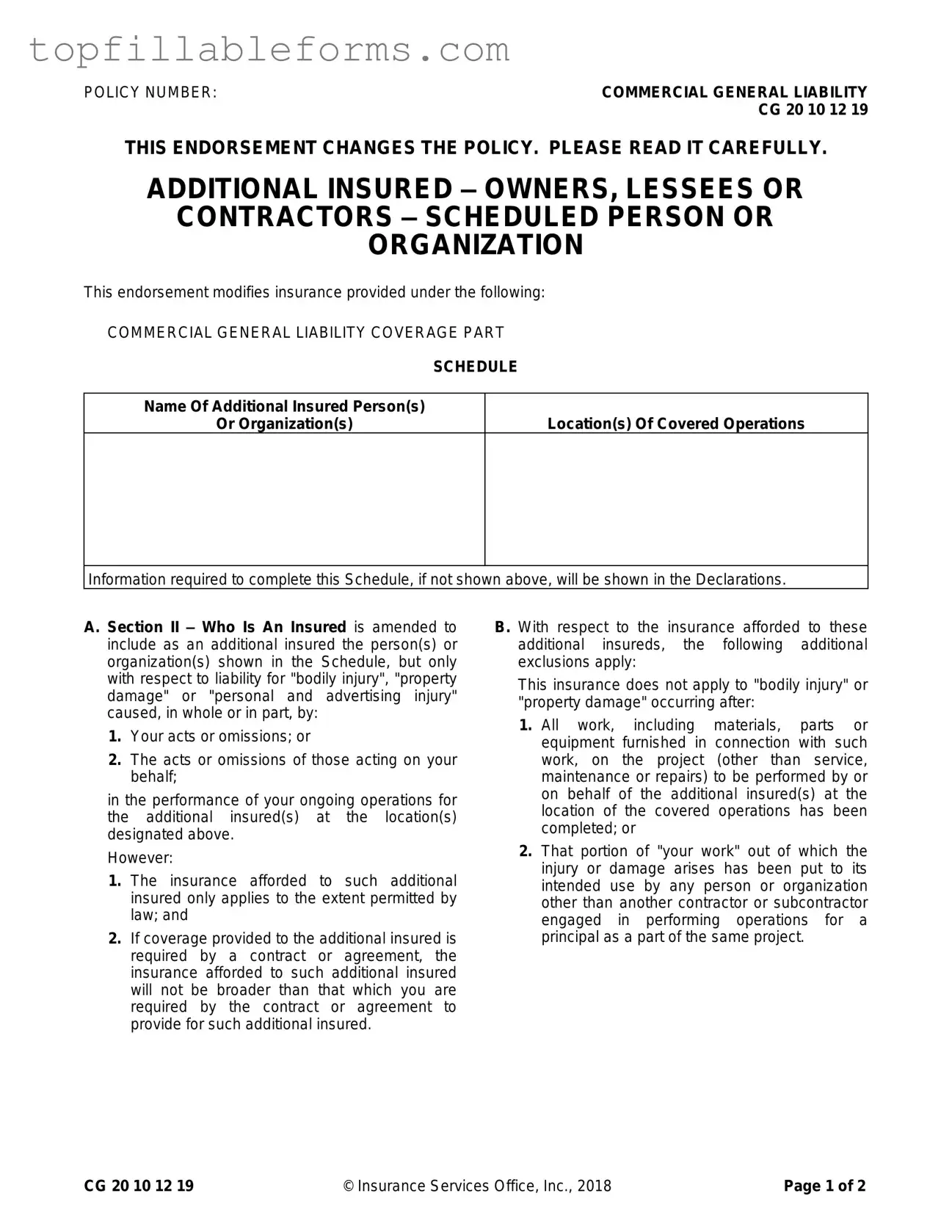Printable Cg 20 10 07 04 Liability Endorsement Form in PDF
The CG 20 10 07 04 Liability Endorsement form is a document that modifies a commercial general liability insurance policy. It adds specific individuals or organizations as additional insured parties, providing them with coverage for certain liabilities arising from the insured's operations. Understanding this endorsement is crucial for ensuring compliance with contractual obligations and protecting against potential liabilities.
Open Cg 20 10 07 04 Liability Endorsement Editor Here

